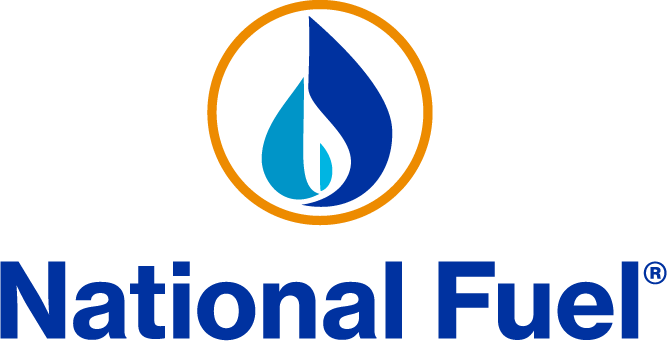Think about every time you turn on the lights, power on a computer or light the burner on your kitchen stove.
Most of us expect energy availability 24 hours a day, seven days a week, because energy is such an essential part of our modern world.
Energy comes from a variety of sources – nuclear power, renewables and fossil fuels. Yet, of all these resources, natural gas is widely considered one of the cleanest, most affordable energy resources for U.S. homes and businesses.
And, in the natural gas market, Pennsylvania is an emerging powerhouse.

Fuel Gas Distribution Corporation.
Pennsylvania sits on top of one of the largest natural gas fields in the world with the Marcellus and Utica shales (second only to Texas in the United States). The abundance of these reserves ensures a stable and long-term supply of natural gas — and PA’s answer to a reliable energy solution.
According to Mike Colpoys, senior vice president for National Fuel Gas Distribution Corporation, Pennsylvania is the second largest electric generating state in the country thanks to natural gas. It has also reaped some of the largest benefits of shale development.
“PA shale gas has led to lower natural gas prices, reasonable electric costs and reduced emissions (replacement of coal generator plants),” explains Colpoys. “The United States has seen the most emission reductions of all the countries participating in the Paris Accords because of natural gas power generation replacing coal generation.”
LEGISLATIVE HURDLES
Despite such progress, recent legislation threatens to penalize the growth of the natural gas market. Industry experts argue many states enacting measures, such as New York’s efforts to prohibit new hook-ups to gas stoves, are not properly considering reliability or affordability. They say the proposals are pushing for a rapid transition to an all-electric economy powered by intermittent renewable wind or solar and zero- emissions dispatchable technologies, such as storage/batteries, that do not exist today.
“It is cost prohibitive for large segments of the population,” says Colpoys. “These measures will result in significant up-front costs for homeowners and small businesses and drive electric utility rates significantly higher to pay for the grid buildout and modernization.”
According to National Fuel, some groups are pushing for the simultaneous decommissioning of the “safe, reliable, resilient underground and already paid for” natural gas system. National Fuel states this would leave consumers with only one energy delivery system and dependent on unreliable sources of energy and significantly more prone to outages, particularly during extreme winter weather events on the coldest of days.
“Reliability of energy is life or death,” maintains Colpoys, who cites the Buffalo blizzard of Christmas 2022 and power crisis in Texas in 2021. “A plan to transition to alternative sources of energy to meet peak winter demands of our service territory must ensure that the source and delivery capabilities are as reliable as today’s natural gas system.”

The Manufacturer & Business Association, for one, has supported and lobbied for support of Energy Choice. The proposal calls for sound energy policy for Pennsylvania with consistency in laws, regulations and policies, and addresses the patchwork of regulation that comes with allowing some 2,500 municipalities to take energy policy into their own hands. Twenty-one states already have Energy Choice-like policies in place.
“Americans and Pennsylvanians should have the right to choose how they heat and cook,” Colpoys states, adding that it’s impossible to run a business properly with different rules in every municipality. “This promotes regulatory certainty, and PA as amore business-friendly state, making it more competitive when attracting and keeping business.”
POWER IN NUMBERS
Natural gas has a powerful impact on the Pennsylvania economy and energy costs.
According to a new analysis conducted by PricewaterhouseCoopers (PwC), the natural gas and oil industry contributed more than $75 billion toward Pennsylvania’s gross domestic product (GDP), or 8.9 percent of the state’s total, and fueled every sector of the PA economy in 2021.
In 2008–2009, before the boom in shale gas supplies that drove commodity prices down, the average monthly bill for a National Fuel Pennsylvania residential customer was $169. In 2021–2022, it was $80.

Pennsylvania’s shale development also could play a powerful role in future economic growth as well as America’s pathway to energy independence.
“Although it has been limited recently due to restrictions on the industry, short-term impacts of the shale area include lower prices for utilities and goods and services and greater employment,” says Colpoys of the shale development. “Long-term impacts including energy independence means not being bound to others in the world who do not have our best interests in mind. There is potential for a large liquefied natural gas (LNG) market, which would equate to more jobs and more money for Pennsylvania and the U.S. economy.”
Pennsylvania already has a well-established infrastructure and a robust distribution network for natural gas, including pipelines, storage facilities and processing plants. The state also is strategically located near major natural gas-consuming regions such as the Mid-Atlantic and Northeastern United States.
“We have a huge opportunity to export natural gas to other regions and also provide much needed energy to the world as an LNG provider, while reducing emissions,” Colpoys adds.
ENVIRONMENT & SAFETY EFFORTS
Across the natural gas value chain, experts say industry is committed to, and highly focused on leak detection and reduction, system modernization and replacement of older pipelines, and investment in new technologies that prevent and capture methane and carbon emissions.
“Environmental stewardship is one of our guiding principles,” explains Colpoys. “At National Fuel, we utilize procedures, tech- nologies and best management practices across our businesses, to develop, build and operate our assets in a manner that respects and protects the environment.”
In 2021, National Fuel announced aggressive yet credible emissions reduction targets.
The company committed to reducing methane intensity at each of its operating segments and established an absolute 25 percent greenhouse gas emissions reduction target by 2030 for a consolidated company using a 2020 baseline. In addition, the company continues to embed sustainability into its strategy, starting with responsible natural gas production in its upstream segments.
For example, Seneca Resources, LLC, National Fuel’s exploration and production company, has been a leader in the transition to certified natural gas. Now, 100 percent of its natural gas production is certified under Equitable Origin’s EO100TM Standard for Responsible Energy Development and under the MiQ Standard for Methane Emissions Performance with an “A” certification grade.

National Fuel also is taking a pro-active approach to decarbonization, evaluating several alternate energy sources with lower carbon emissions, including renewable natural gas, hydrogen and hydrogen-enhanced natural gas. “We are also exploring leveraging existing natural gas infrastructure as the delivery system for low- and zero-carbon fuels,” Colpoys states.
Despite such progress made by industry, there is still much more consumers need to know about the energy market. “Renewables are not necessarily ‘renewable’ as they require landfilling solar panels and windmill blades,” explains Colpoys. “Fossil fuels are required in the manufacturing/processing of these renewables. Intermittency of renewable energy requires reliable backup of the grid that mandates overbuilding and ultimately greater cost for all. Typical electric vehicle (EV) batteries require a significant amount of mining (for lithium, cobalt and nickel) that harms the environment.”
“Education is a hurdle,” Colpoys continues. “Citizens need to take an interest and under- stand how this energy transition and decisions being made will impact energy for all.”
Greater Impact
For more than a century, National Fuel has been the hometown energy team, providing safe, reliable and affordable gas service to 2.1 million people (approximately 750,000 customers) in Northwestern Pennsylvania and Western New York. Headquartered in Williamsville, New York, the diversified, integrated energy company, with more than 2,000 employees, is actively involved in the communities it serves. In 2022, the National Fuel Gas Company Foundation, National Fuel and employees donated more than $2.5 million to charitable organizations. Since its inception in 2005, the Foundation and National Fuel employees have given more than $24 million to more than 800 organizations. In 2023, the Foundation directed funding to support nonprofits aligned with the Foundations areas of giving. For example, in Pennsylvania, grants were awarded to ExpERIEnce Children’s Museum, Penn State Erie Behrend College, Pitt Bradford, Penn College of Technology, St. Martin Center, Our West Bayfront, Second Harvest Food Bank of Northwest Pennsylvania and Central Pennsylvania Food Bank, among many others.
For more information, visit nationalfuel.com.
Read more in the August 2023 edition of the Business Magazine












